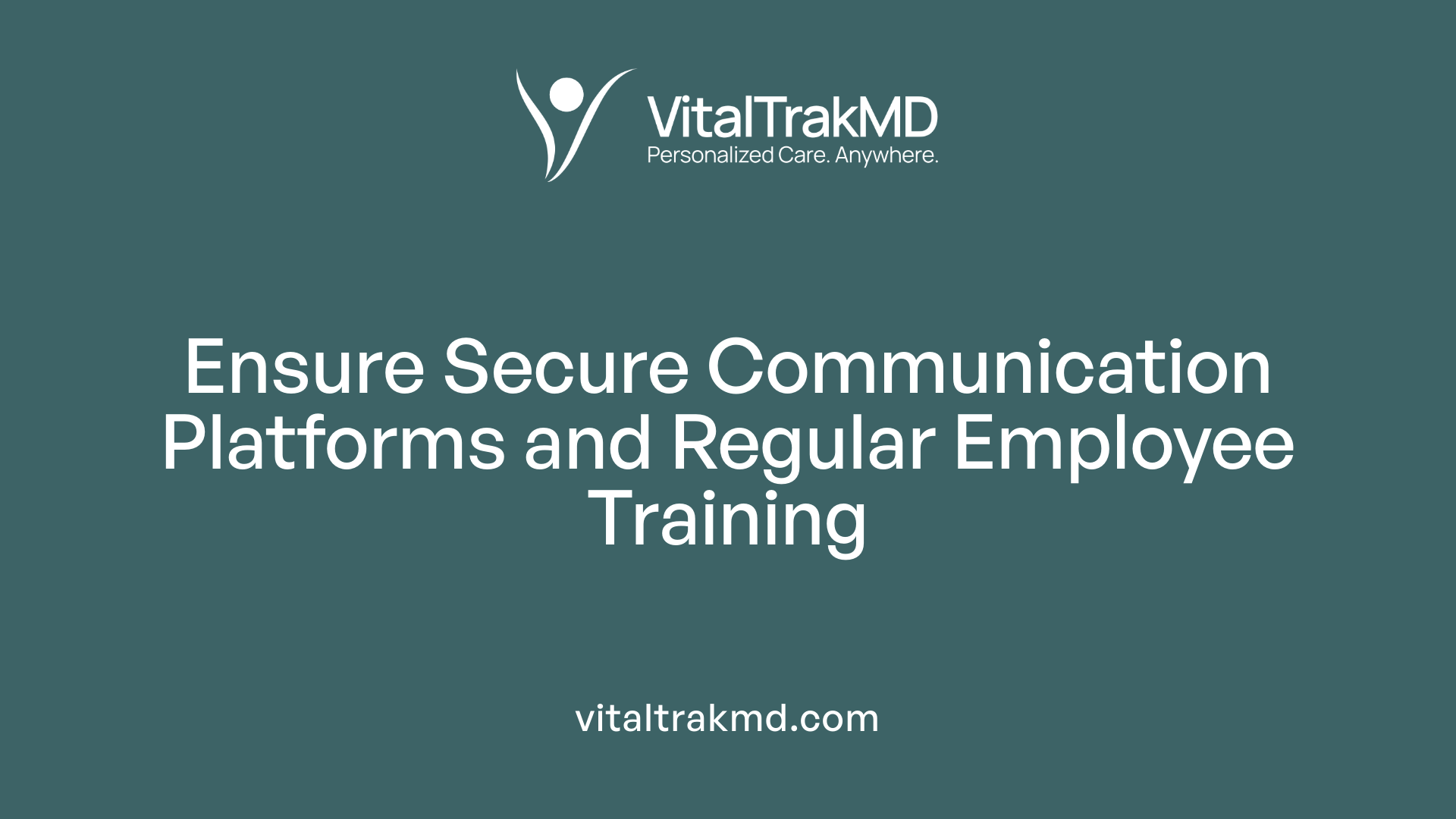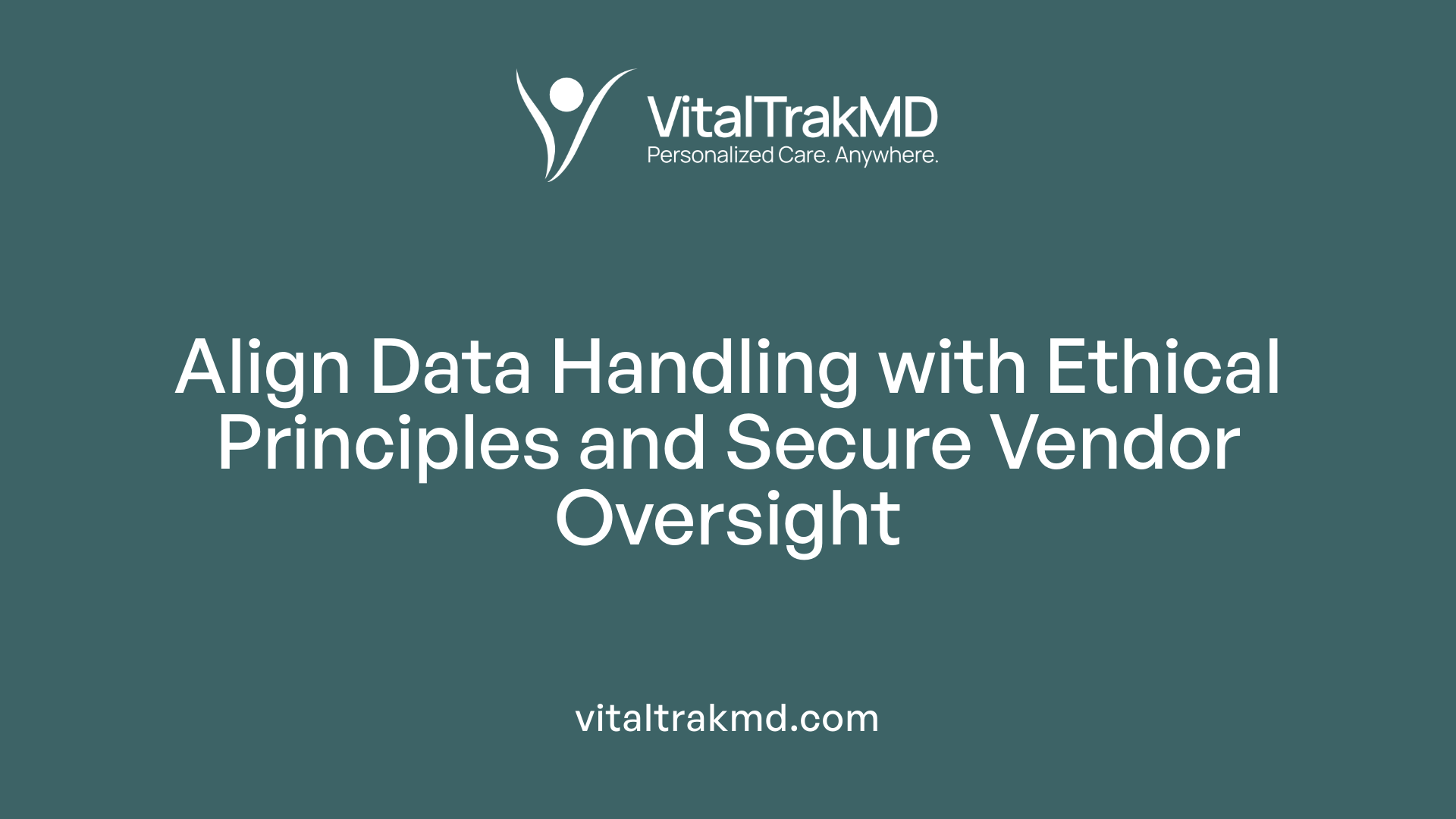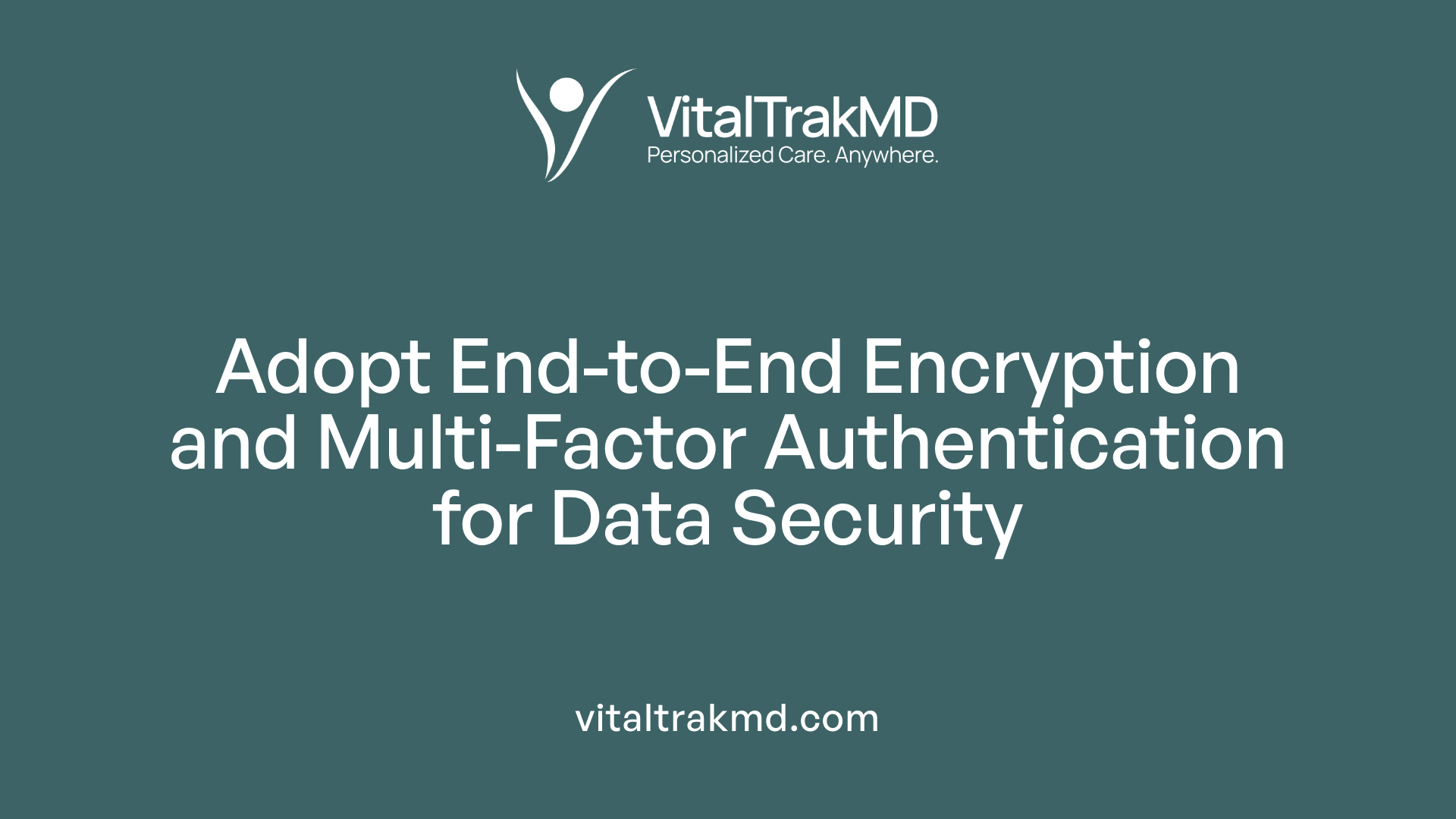Protecting Senior Data Privacy in Remote Health Monitoring

The Imperative of Data Privacy in Senior Remote Monitoring
As remote health monitoring becomes integral to elderly care, ensuring the privacy and security of sensitive senior data has never been more crucial. This article explores the multifaceted landscape of protecting senior health information, encompassing technological measures, legal considerations, and social factors that influence trust and effectiveness in telehealth environments.
Best Practices for Safeguarding Senior Health Data Privacy

What are the best practices for safeguarding senior health data privacy in remote health monitoring?
Protecting the privacy of seniors in remote health monitoring requires comprehensive security measures. Healthcare providers should prioritize using telehealth platforms that comply with HIPAA regulations, which specify standards for data encryption and security. All sensitive communications should occur in private settings, such as a quiet room at home or a secure clinic space, avoiding public or shared locations that could compromise confidentiality.
Ensuring the use of secured Wi-Fi networks and personal devices with up-to-date security configurations significantly reduces risks. Implementing strong authentication methods like multi-factor authentication (MFA) adds an extra layer of security, making it difficult for unauthorized users to access sensitive data.
Regular software updates and routine risk assessments are vital for identifying and addressing potential vulnerabilities. Staff training on cybersecurity best practices, including recognizing phishing attempts and secure data handling, helps prevent human errors.
Transparent communication about privacy policies, data usage, and consent is essential to foster trust. Educating patients about their rights and involving them actively in managing their data further enhances security.
In summary, combining HIPAA-compliant technology, secure operational procedures, ongoing staff education, and transparent patient communication forms the backbone of effective privacy preservation for seniors in remote health monitoring. These measures ensure that sensitive health data remains confidential, fostering trust in digital healthcare solutions.
Legal, Regulatory, and Policy Frameworks
 When it comes to protecting senior health data in remote health monitoring, several legal, regulatory, and policy considerations are involved. The Health Insurance Portability and Accountability Act (HIPAA) in the United States and the General Data Protection Regulation (GDPR) in Europe play central roles in establishing standards for data privacy, security, and patient rights.
When it comes to protecting senior health data in remote health monitoring, several legal, regulatory, and policy considerations are involved. The Health Insurance Portability and Accountability Act (HIPAA) in the United States and the General Data Protection Regulation (GDPR) in Europe play central roles in establishing standards for data privacy, security, and patient rights.
HIPAA mandates strict controls on protected health information (PHI), ensuring confidential treatment of medical data and requiring secure handling during transmission and storage. GDPR emphasizes transparency, user consent, and data minimization, providing robust protections for health data, and applies to any organization handling personal data within the EU.
In addition, the U.S. Food and Drug Administration (FDA) classifies remote monitoring devices into risk categories—Class I, II, or III—based on potential harm. During emergencies like the COVID-19 pandemic, the FDA has issued Emergency Use Authorizations (EUAs) allowing certain devices to be used before full approval, balancing urgency with safety.
Beyond regulations, ethical principles such as autonomy, beneficence, justice, and non-maleficence should guide data handling practices. Respecting patients’ rights to control their data, ensuring equitable access, and preventing bias in monitoring technologies are crucial.
Effective vendor oversight and breach response protocols are also essential. Healthcare organizations should establish clear policies on data ownership, obtain informed consent, and implement security measures like encryption and multi-factor authentication. In case of breaches, having a detailed incident response plan and working with vendors through Business Associate Agreements (BAAs) is necessary to manage and mitigate risks.
Moreover, policymakers and healthcare leaders need to enforce oversight mechanisms, including regular audits and safeguards through agencies like the Centers for Medicare & Medicaid Services (CMS). These measures help prevent fraud, ensure proper use of monitoring tools, and uphold data integrity across systems.
By aligning legal obligations with ethical standards, organizations can create a trustworthy environment that safeguards senior patients’ data while enabling effective remote monitoring.
Technical Security Measures for Data Protection

What technical security measures can be implemented to protect sensitive senior health information in remote monitoring systems?
Protecting sensitive health data of older adults in remote monitoring requires a multi-layered approach that emphasizes robust technical safeguards.
First, encryption plays a pivotal role. Data stored on devices or transmitted across networks must be encrypted using strong protocols like AES-256. This protects information during transfer and while at rest, maintaining confidentiality and integrity.
Secure network configurations are equally critical. Setting up firewalls, segregating networks, and using Virtual Private Networks (VPNs) encrypt the internet connection between devices and servers, making interception difficult for cybercriminals.
Implementing multitier access controls enhances security. Multi-factor authentication (MFA) adds an extra verification step, ensuring only authorized personnel access sensitive health information. Role-based access controls (RBAC) ensure users can only view information necessary for their role.
Regular vulnerability assessments are vital. Conducting routine scans, penetration testing, and applying security patches promptly help identify and fix potential flaws before exploitation.
Additionally, employee cybersecurity training ensures staff recognize threats such as phishing and malware. Secure device management involves keeping devices updated, using strong passwords, and disabling unnecessary services.
All these measures should align with HIPAA standards and best practices, ensuring compliance while maintaining the trust of senior patients and their families.
| Security Measure | Description | Benefit |
|---|---|---|
| End-to-end encryption | Encrypts data during transfer and storage | Ensures data confidentiality |
| VPNs and secure networks | Protects internet traffic via secure tunnels | Prevents unauthorized access |
| Multi-factor authentication | Requires multiple verification methods | Increased access control |
| Role-based access controls | Grants permissions based on user roles | Minimizes data exposure |
| Vulnerability assessments and patches | Regular testing and updates | Fixes security flaws |
| Employee cybersecurity training | Educates staff on threats and best practices | Reduces human error |
Emphasizing these technical protocols can greatly improve the security baseline for remote health monitoring systems, safeguarding the personal health information of vulnerable senior populations.
Social and Psychological Factors Impacting Privacy Concerns
How do social and psychological factors influence privacy concerns for seniors in telehealth environments?
Social and psychological aspects play a significant role in shaping how seniors perceive privacy in telehealth settings. Many older adults have limited experience or confidence with digital technology, which can lead to heightened anxiety about data security. This lack of digital literacy may cause mistrust, making seniors overly concerned about potential privacy breaches or hacking incidents.
Shared living environments further complicate privacy concerns. For seniors living in multi-generational households or communal settings, finding a quiet, private space for virtual consultations can be difficult. This environment fosters worries about sensitive health information being overheard or accessed by unauthorized household members.
Trust is central to comfort in using telehealth services. When patients trust their healthcare providers and the security measures in place, they are more likely to feel secure sharing personal health data. Conversely, fears related to cyber threats, scams, and social norms negatively influence willingness to engage in telehealth.
Perceptions of data security are influenced by awareness of hacking risks and data breaches. Many seniors worry that their information could be stolen or misused, which diminishes their confidence in digital health solutions. Additionally, concerns about social norms, such as judgments from family or peers about privacy violations, can discourage continuous use of telehealth platforms.
Finally, these psychological barriers often lead to reluctance in adopting or maintaining telehealth routines. To overcome these issues, healthcare providers need to focus on building trust through transparency, providing education on data protections, and ensuring that privacy preferences are respected and clearly communicated.
Challenges and Strategies in Ensuring Privacy and Security
What are the common privacy and security challenges associated with telehealth, and how can they be addressed?
Telehealth offers great potential for delivering healthcare remotely, but it also introduces numerous privacy and security challenges. One common issue is the risk of unauthorized access and data breaches. Sensitive patient information can be intercepted during transmission or accessed by hackers if security measures are weak. To combat this, robust encryption protocols, multi-factor authentication, and secure communication channels are essential.
Environmental vulnerabilities also pose a significant threat. Many patients use telehealth from private spaces that might lack adequate lighting or have unsecure Wi-Fi networks, increasing the risk of data interception and privacy loss. Providers should encourage patients to find safe, private environments for virtual visits and advise avoiding public Wi-Fi.
Technology-related vulnerabilities include hacking attempts, the use of outdated software, and digital literacy gaps among users. Devices and apps that are not regularly updated can harbor security flaws, making them easy targets for cyberattacks. Implementing regular software updates, security patches, and educating users on digital hygiene are critical steps.
Operational challenges involve gaps in regulations, inconsistent policies, and insufficient staff training. Many consumer devices lack clear regulatory oversight, especially during emergencies like the COVID-19 pandemic, where Emergency Use Authorizations (EUAs) allow unapproved devices to be used. Healthcare organizations should develop clear privacy policies, invest in staff training, and stay updated with evolving regulations to better protect patient data.
Addressing these issues requires a combination of technical controls like encryption, access restrictions, and cybersecurity practices, along with organizational strategies such as policy development, ongoing training, and patient education. Implementing comprehensive security measures and advocating for unified regulations can strengthen privacy protections in telehealth, fostering trust and wider adoption.
For further insights, searching "privacy security challenges telehealth" provides detailed analysis of ongoing issues and emerging solutions in the field.
Designing Privacy-Respecting Remote Monitoring Systems for Seniors
Ensuring privacy and confidentiality for elderly users in remote health monitoring involves a combination of innovative technologies and best practices. One effective approach is to use contactless sensors and edge computing to minimize data exposure.
Contactless sensors such as PIR motion detectors, door sensors, and vision-based systems like facial recognition integrated with remote photoplethysmography (rPPG) allow continuous monitoring without capturing intrusive audio or video recordings. These sensors can discreetly gather necessary health information while respecting user privacy.
A crucial technique is privacy-preserving data processing. By analyzing biometric data locally on edge or fog computing nodes—devices close to the data source—only non-identifiable or anonymized data is transmitted to the cloud. This minimizes the risk of sensitive information exposure during data transfer.
Encryption plays a vital role in securing data during transmission and storage. Using robust encryption protocols and strong access controls prevents unauthorized access, ensuring data integrity and confidentiality throughout the data lifecycle.
Employing machine learning models tailored for activity recognition and health trend detection can further safeguard privacy. When these algorithms operate locally, they do not require raw data to leave the device, reducing privacy concerns associated with transmitting detailed information.
Localization of data analysis, combined with minimal data transmission, ensures that only essential, privacy-safe information is shared remotely. This strategy not only protects individual privacy but also reduces bandwidth requirements.
In summary, integrating contactless sensors, local processing, strong encryption, and machine learning creates a secure, privacy-conscious framework. This design prioritizes the autonomy, dignity, and confidentiality of elderly users while providing effective health monitoring.
Towards a Safer Future for Elderly Digital Health
The protection of senior data privacy in remote health monitoring hinges on a multifaceted approach that combines technological safeguards, robust legal frameworks, and consideration of social and psychological factors. Emphasizing encryption, secure device configurations, comprehensive staff training, and clear policies can substantially mitigate risks. Furthermore, adhering to evolving regulations like HIPAA and GDPR, while employing innovative solutions such as blockchain and federated learning, can enhance data security and compliance. Addressing seniors' psychological concerns through education and environment adjustments promotes trust and adoption. As digital health continues to expand, a proactive stance on privacy, continuous monitoring, and adaptive policies will be essential to foster a secure, equitable, and trusted remote care environment for elderly populations.
References
- Privacy in the Age of Remote Patient Monitoring: Insights ... - CTeL.org
- How do I protect my data and privacy? - Telehealth.HHS.gov
- Remote Patient Monitoring for Senior Living has collected a lot of data
- Privacy and Security Risk Factors Related to Telehealth Services
- Remote Patient Monitoring Systems Are a Possible Attack Vector
- Data Privacy in Healthcare: Balancing Innovation with Patient Security
- Data privacy concerns and use of telehealth in the aged care context
- Regulatory, safety, and privacy concerns of home monitoring ...
Recent articles
Want to Feel Better and Live Healthier?
Join hundreds of patients taking control of their health with personalized care that fits their life – not the other way around.
Rated 4.8/5 by 32+ customers







